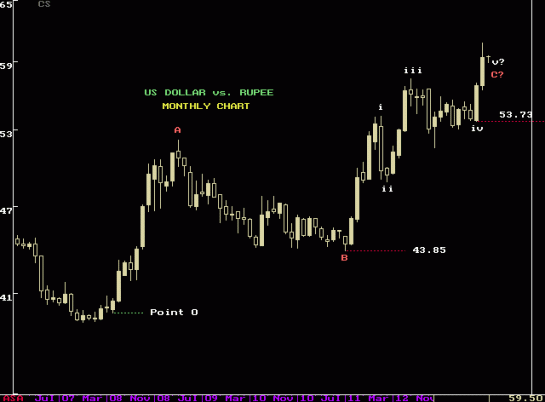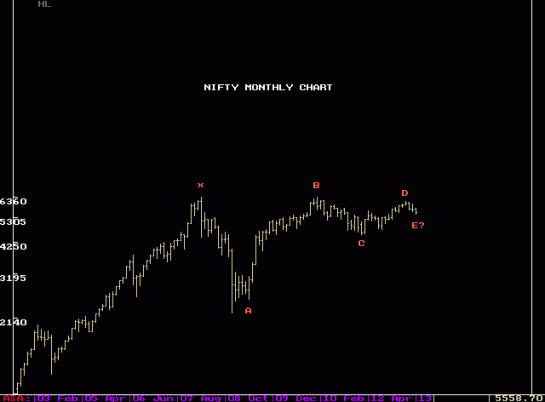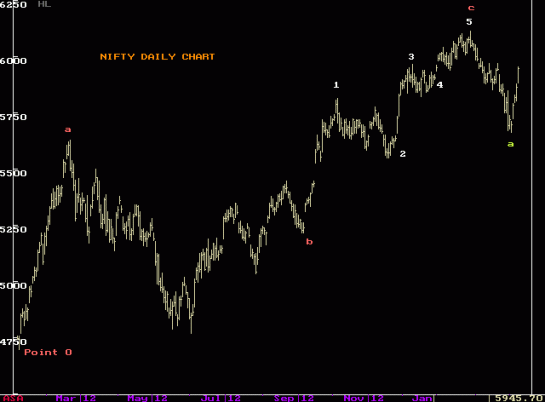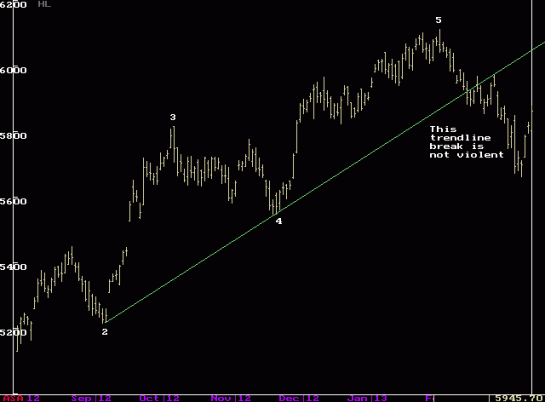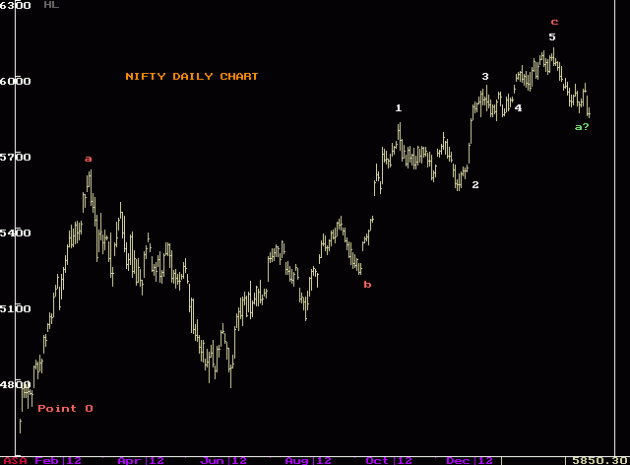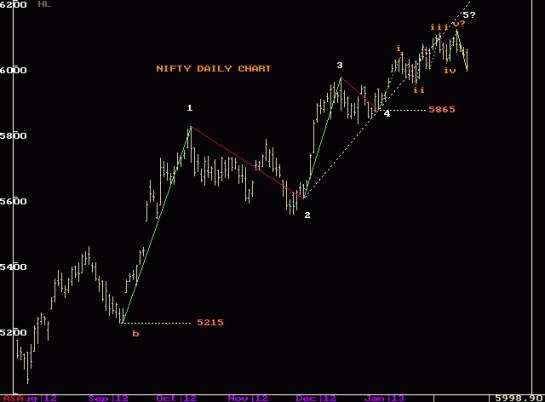This is my first post on the analysis of US Dollar vs. Rupee chart. I would like to make it clear that I have tried to interpret the wave pattern using wave theory and general rules of logic, in spite of having a very limited data of free market conditions. As you know that charts of only those stocks, commodities or currencies can be studied under wave theory where a large public participation is involved. We have seen such a participation in terms of trading volumes, only in last few years.
I am considering a monthly chart beginning from April 2008 at the bottom of 39.77 (point 0). Wave ‘A’ took about an year to complete and made a high of 52.18 in March 2009. That was followed by wave ‘B’ that retraced wave A by 61.8% and took a little over two years to terminate. Thereafter wave ‘C’ is in progress for last 2 years now.
Wave ‘C’ can be interpretted as a terminal impulse pattern visibly much more sub-divided than wave ‘A’. Waves ‘ii’ and ‘iv’ overlap and wave ‘iii’ is shorter than wave ‘i’. Wave ‘v’ should therefore be smaller than wave ‘iii’. This means that wave ‘v’ must end below about 63.5.
If this interpretation of terminal impulse is correct then the entire wave ‘C’ should be retraced in less than 50% of the time it took to form.
This means if wave ‘C’ is over in next few weeks then the US dollar should crash below 43.85 in about one year. Before that happens the dollar should breach the level of 53.73 in shorter time than wave ‘v’ takes to terminate.
If the Dollar crosses the level of 63.5 vs. rupee then this interpretation is incorrect.
Last few years the fight is on with the Dollar dominating . We need some time to find whether the Rupee can turn the corner and emerge as the winner.
